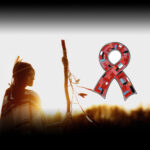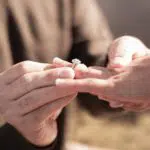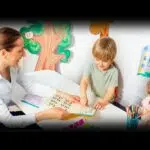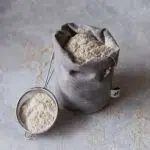National Native H.I.V./AIDS Awareness Day (N.N.H.A.A.D.) is an annual holiday observed on the first day of Spring, and this year, it falls on March 20. It’s a day to give hope and support to people in American communities regarding H.I.V., draw attention to those fighting the disease and honor those who have been lost through the disease. These sorts of events are very crucial and should be observed worldwide, especially in countries with less advanced medical and health services with great emphasis made on prevention. We believe the people who create awareness and help fight this disease are unsung heroes and we are very elated to join in commemorating this day.
History of National Native HIV/AIDS Awareness Day
The National Native H.I.V./AIDS Awareness Day has been around since 2007 as a way to place attention on the efforts to reduce H.I.V. among American Indians, Alaska Natives, and Native Hawaiians, and show support for people with H.I.V. in these communities. The event is planned by the National Native H.I.V. network to promote H.I.V. education, testing, prevention, and treatment in Native communities.
The invention of this campaign was necessary because of the challenges faced by the Native American people which creates difficulty in prevention and providing the best care for members living with H.I.V. Some of these challenges include awareness of their H.I.V. status, alcohol and illicit drug use, data limitations, sexually transmitted diseases, stigma and confidentiality, socioeconomic issues, and cultural diversity. These challenges especially, stigma, fear, discrimination, and homophobia can place many at higher risk, including those who live in rural communities or on reservations.
In October of 2006, the National Native C.B.A. Network which was made of three collaborating bodies (Commitment to Action for 7th-Generation Awareness & Educations (CA7AE), Inter-Tribal Council of Arizona, Inc. (I.T.C.A.), and National Native American AIDS Prevention Center (N.N.A.A.P.C.) presented a resolution to the National Congress of American Indians for National Native H.I.V./AIDS Awareness Day, and it was approved.
The date of the Spring equinox was set aside as it marks the period of rebirth and balance.
Funding for the three bodies came from the Centers for Disease Control and Prevention (C.D.C.) to provide capacity-building assistance to Native organizations, tribes, state health departments, and any other organization serving Native populations. Since the founding of N.N.H.A.A.D., the collaborative partnership has grown to include Begay Consulting, Center for Prevention and Wellness, Council Oaks Training and Evaluation, Inc., E.T.R’s Community Impact Solutions Project, Florida Department of Health — H.I.V. Section, Great Plains Tribal Chairmen’s Health Board, as well as a 12-member materials review committee to review all products developed for N.N.H.A.A.D.
Sadly, even after the holiday was created, HIV statistics have not improved for this sector, it was reported that of the 39,782 H.I.V. diagnoses in the United States in 2016, 1% (243) were among American Indians & Alaska Natives. Of those, 81% (198) were men and 19% (45) were women. Of the 198 H.I.V. diagnoses among American Indians & Alaska Natives men in 2016, most (77%; 152) were attributed to male-to-male sexual contact. Most of the 45 H.I.V. diagnoses among American Indians & Alaska Natives women in 2016 were attributed to heterosexual contact (69%; 31). In 2016, 102 AIs/ANs were diagnosed with AIDS. Of them, 75% (77) were men and 24% (24) were women. But with constant efforts, the numbers decline daily.
National Native HIV/AIDS Awareness Day timeline
The National Native C.B.A. Network presents a resolution to the National Congress of American Indians for National Native H.I.V./AIDS Awareness Day, and it is approved.
The first event to mark N.N.H.A.A.D. occurs with great success.
One of the most successful celebrations yet occurs.
For 2021, the theme is “Zero is Possible Together: Innovation + Awareness" which is celebrated in grand style.
National Native HIV/AIDS Awareness Day FAQs
What day is National Native H.I.V./AIDS Awareness Day?
It is celebrated on the first day of Spring which could fall on March 19, 20, or 21 of any year.
What is the main cause of H.I.V. infection?
The H.I.V. infection is caused by the human immunodeficiency virus. You can get H.I.V. from contact with infected blood, semen, or vaginal fluids
What are the objectives of N.N.H.A.A.D?
Encourage Native people to get educated and to learn more about H.I.V./AIDS and its impact in their community; work together to encourage testing options and H.I.V. counseling in Native communities and help decrease the stigma associated with H.I.V./AIDS.
How to Observe National Native HIV/AIDS Awareness Day
Team up with other people
Posters and pictures are placed in different areas in cities and also rallied around to create enough awareness. See what you can do on this day to contribute.
Hop on the trend
Join in to trend the #NativeHIVAIDSAwarnessDay on social media. Start an online conversation.
Attend the events
In America, there are also Health Fair Information Booths, Mini workshops, Mini Powwow, Theatre Performance Candlelight Vigil, and Sunrise Ceremony. Get in on the action on this day.
5 Facts About H.I.V./AIDS Awareness That Will Interest You
H.I.V. can be stopped
The hope is to stop the spread of H.I.V. and it is possible.
You can make a difference
By supporting the campaign, you can touch a lot of hearts and reduce H.I.V. associated stigma
N.N.H.A.A.D. can be celebrated from anywhere
From your bedroom to your vacation site, you can celebrate this event, especially through social media posts.
The events can be very educational
The events include awareness speeches, Health Fair Information Booths, Mini workshops, etc.
It honors those lost
The event also honors those who have died from H.I.V./AIDS.
Why National Native HIV/AIDS Awareness Day is Important
It promotes tolerance
This day helps reduce the stigma for people living with H.I.V. in society. This is a very important goal.
It helps us better understand the disease
It educates everyone on the effect of the disease in our community. We love this!
It promotes safe sex practice
It helps to reduce the transmission of H.I.V. and other S.T.Ds through the promotion of safe sex. This is one of the ways we can manage the spread of the disease.
National Native HIV/AIDS Awareness Day dates
| Year | Date | Day |
|---|---|---|
| 2024 | March 20 | Wednesday |
| 2025 | March 20 | Thursday |
| 2026 | March 20 | Friday |







































